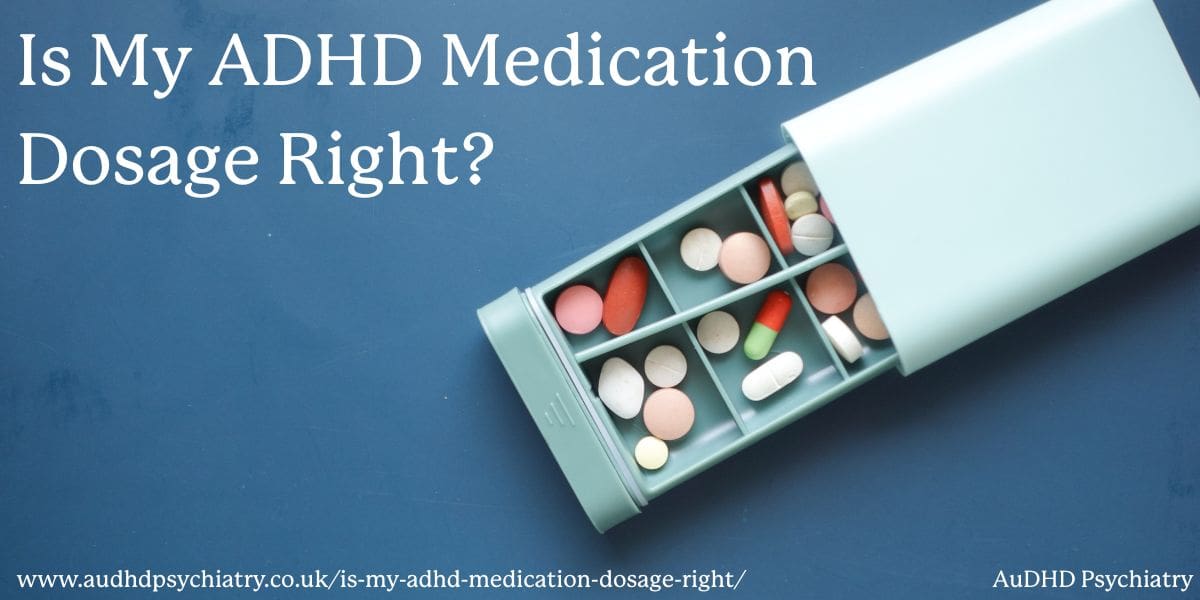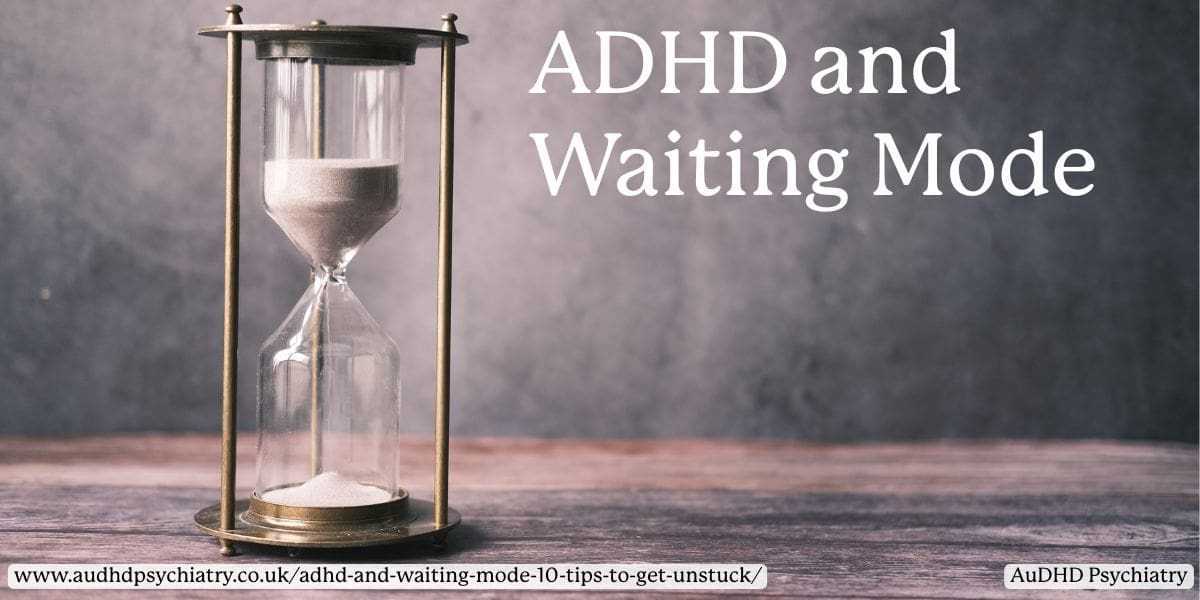If your ADHD medication isn’t helping the way it should, or if side effects are getting in the way, it might not be the right dose. Getting the dosage right isn’t guesswork; it’s a critical part of effective treatment and can take time to fine-tune.
The ideal dose should ease symptoms of ADHD, like inattention or impulsivity, without disrupting sleep, appetite, or mood. But many people aren’t sure what to expect during the titration process, or how to tell if their current prescription is working.
This guide walks you through the signs that your dose may be too low or too high, explains what happens during titration, and helps you track your progress in partnership with your healthcare provider. We’ll also explore different ADHD medications, coexisting conditions, and how to find a treatment plan that fits your needs.
What to Expect When Starting ADHD Medication
Determining the appropriate starting dose for ADHD medication is a personalized process that considers various factors to ensure both efficacy and safety. Healthcare providers assess elements such as age, weight, the severity of symptoms, and any coexisting health conditions. For children, the starting dose often correlates with their weight and specific symptoms, while adults may have different considerations based on their overall health and lifestyle.
How Is Your Starting Dose Determined?
The goal is to initiate treatment with a low dose to monitor how the individual responds, minimising potential side effects. This approach allows for adjustments to achieve the correct dosage that effectively manages ADHD symptoms without causing undue adverse effects. Different medicines, including stimulants and non-stimulants, may be considered based on the individual’s unique needs and response to treatment.
Keeping open and regular communication with your healthcare provider throughout this process is crucial. Regular consultations help customise the treatment plan, ensuring that the chosen medication and its dosage align with the individual’s evolving needs and any changes in their symptoms or health status.
What Is ADHD Titration and Why Does It Matter?
ADHD titration refers to the gradual adjustment of medication dosage to find the optimal balance between maximising symptom control and minimising side effects. This process is essential because individuals respond differently to medications, and what works for one person may not be effective for another.
What Happens During Titration?
During titration medication, the healthcare provider will start with a low dose and incrementally increase it, typically over several weeks, monitoring the individual’s response at each stage. This careful approach helps identify the most effective dosage that offers the desired therapeutic benefits with the fewest side effects.
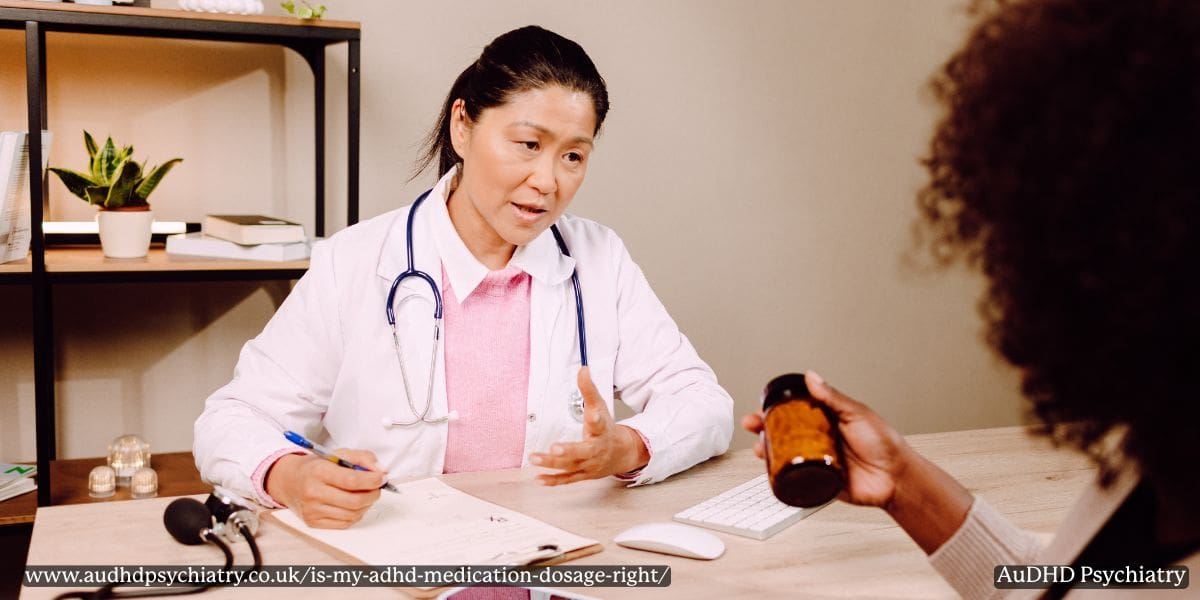
Does Titration Look the Same for Everyone?
Titration timelines can vary between adults and children. For instance, adults may experience adjustments over a few weeks, while children might require a more extended period to find the appropriate dose. Medications like Elvanse (known as Vyvanse in other regions) and extended-release formulations are often used during this process to provide consistent symptom control throughout the day.
Understanding the titration process is fundamental for setting realistic expectations and ensuring adherence to the treatment plan. It underscores the importance of patience and collaboration between you and your healthcare provider to achieve the best possible outcomes in ADHD management.
What Gets Monitored During the Titration Process?
Monitoring during titration is essential to determine whether your medication is achieving the right balance of effectiveness and tolerability. Your healthcare provider will assess multiple factors, including how well the medication controls symptoms like inattention, impulsivity, and restlessness throughout the day.
This phase often involves making small dose adjustments based on how you respond regarding symptom relief and emerging side effects. To guide these changes, you may be asked to keep a medication journal. This can help you and your doctor track patterns in focus, mood, sleep quality, and appetite, as well as note any changes during specific times, like work hours or the school day.
Medication tracking tools, whether apps or paper-based logs, can also support consistency and make it easier to spot trends. Over time, your clinician will work with you to identify a target dose: one that delivers noticeable improvements without causing unwanted effects. This becomes your maintenance dose or the foundation of your ongoing treatment plan.
Regular follow-up appointments during this stage are key. They allow you to share observations, raise any concerns, and collaborate with your provider on finding the most effective, sustainable approach for managing ADHD.
Signs ADHD Medication Dose Is Too Low
In the next sections, we’ll share some factors to consider during dosage troubleshooting. Keep in mind that self-adjusting is not advised; these are simply things to monitor and share with your clinician regularly. First, let’s discuss signs ADHD medication dose is too low.
Mental and Behavioural Signs to Watch
Identifying when your ADHD medication dose is too low is crucial for effective symptom management. Common mental and behavioural indicators include:
- Persistent Inattention: Difficulty focusing on tasks, frequent daydreaming, and a tendency to be easily distracted.
- Procrastination: Consistently delaying tasks, struggling to initiate or complete activities.
- Hyperactivity / Impulsivity: Acting without thinking, interrupting others, or making hasty decisions.
- Fidgeting: Inability to stay still, constant movement, or tapping.
- Distractibility: Easily sidetracked by external stimuli, leading to challenges in maintaining attention.
- Restlessness: Feeling an internal sense of agitation or being on edge.
These symptoms can significantly impact daily functioning, particularly during structured periods like the school day. If you observe these signs persisting despite medication, it’s essential to ask for guidance from your healthcare provider to discuss potential dosage adjustments.
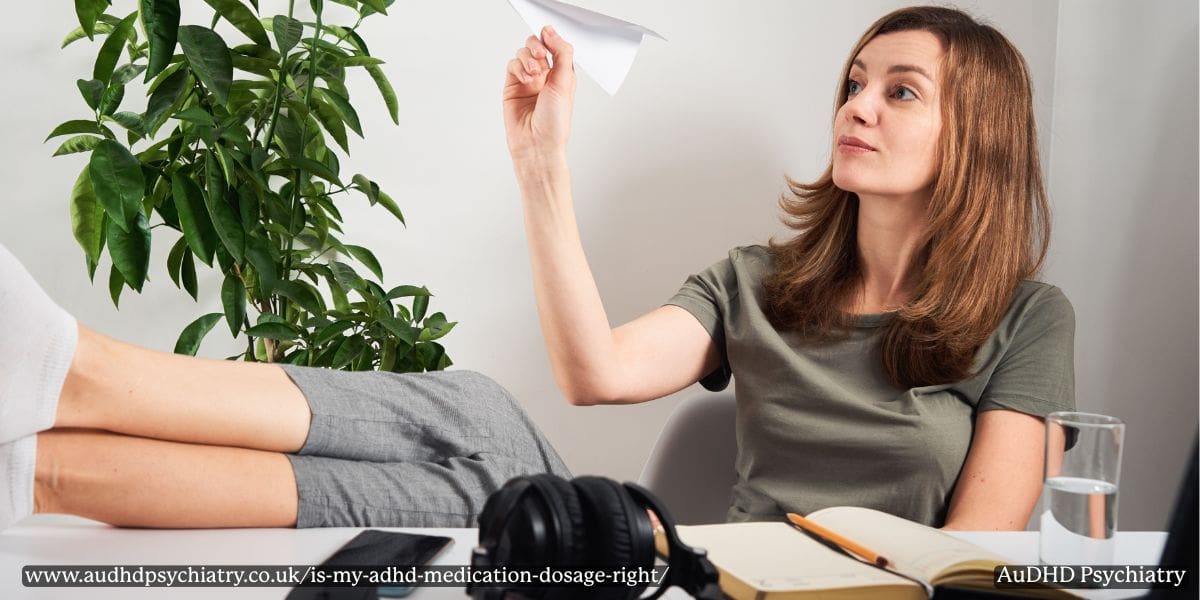
Physical or Emotional Signs of a Low Dose
In addition to behavioural symptoms, physical and emotional signs may indicate that your ADHD medication dose is insufficient:
- Low Dosage Effects: Minimal improvement in core symptoms, suggesting the need for a dosage review.
- Inattention: Continued challenges in maintaining focus, leading to errors or incomplete tasks.
- Emotional Overreactions: Heightened sensitivity, mood swings, or disproportionate responses to situations.
- Lack of Focus: Difficulty concentrating on tasks, leading to decreased productivity.
- Medication Absorption Issues: Factors like food intake or gastrointestinal conditions affecting how the medication is absorbed and utilized by the body.
- Medication Response Variability: Inconsistent symptom control, with periods of effectiveness followed by lapses.
Monitoring these signs and maintaining open healthcare provider communication can facilitate timely adjustments to your treatment plan, ensuring optimal management of ADHD symptoms.
Signs ADHD Medication Dose Is Too High
Emotional and Behavioural Red Flags
An excessively high dose of ADHD medication can lead to various emotional and behavioural issues:
- Anxiety: Increased nervousness or feelings of unease.
- Emotional Blunting: Reduced emotional responsiveness, feeling detached or indifferent.
- Irritability: Heightened sensitivity to stimuli, leading to frustration or anger.
- Feeling Robotic: A sense of going through motions without genuine engagement or emotion.
- Mood Lability: Rapid and unpredictable mood changes.
- Unusual Changes: Notable shifts in behaviour or personality that are uncharacteristic.
These symptoms can affect interpersonal relationships and overall quality of life. If you experience such changes, you must consult your healthcare provider promptly.
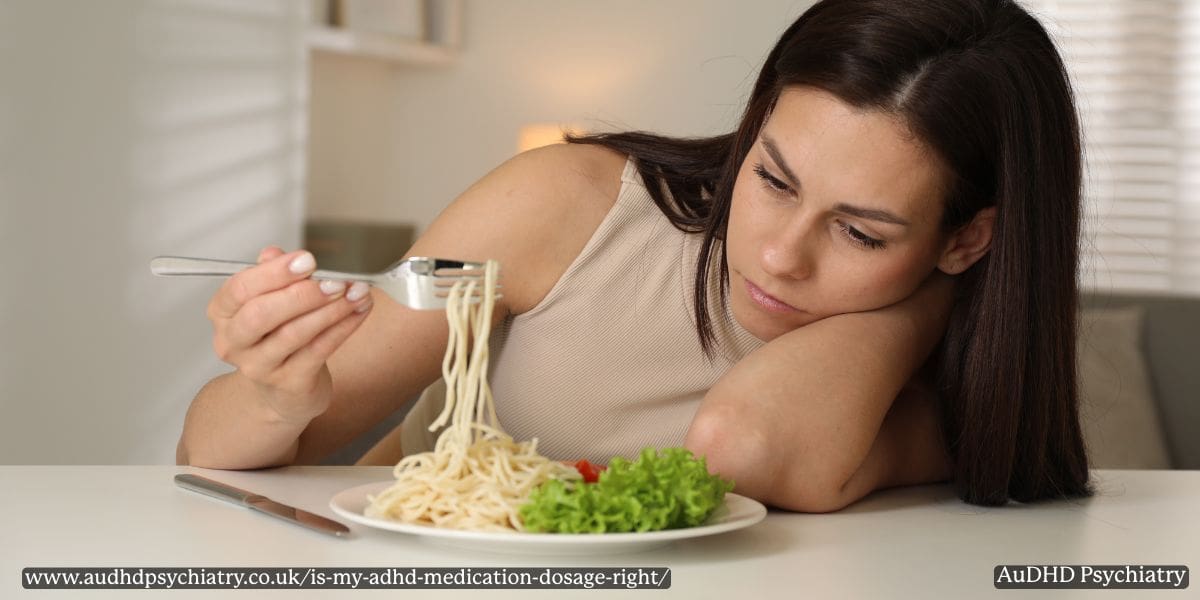
Physical Symptoms of an Overdose
When the dose of ADHD medication is too high, the physical side effects can become difficult to ignore. Some may appear gradually, while others emerge suddenly and signal the need for an urgent review of your treatment plan.
- Appetite Loss: Significant reduction in hunger, leading to weight loss.
- Dry Mouth: Ongoing dryness in the mouth that may result from decreased salivary flow.
- High Blood Pressure: Elevated blood pressure readings may pose cardiovascular risks.
- Chest Pain: A sensation of pressure, tightness, or pain felt in the chest region, potentially indicating heart-related issues.
- Increased Heart Rate: Irregular or rapid heartbeat, often described as palpitations.
- Fast Heartbeat: Notably rapid pulse, even at rest.
- Insomnia: Ongoing issues with sleep onset or duration, commonly followed by fatigue.
- Physical Dependence: Developing a reliance on the medication to function normally.
- Muscle Cramps: Involuntary muscle contractions causing discomfort.
Experiencing these symptoms warrants immediate medical attention to reassess and adjust the medication dosage appropriately.
When to Talk to Your Doctor About Dose Changes
Adjusting your ADHD medication without medical supervision is never advisable, even if you think the current dose isn’t working. Self-adjustments can lead to unwanted side effects, missed symptoms, or interactions with other medicines. Instead, focus on tracking your symptoms and communicating regularly with your healthcare provider.
What to Track Daily
Whether you’re newly diagnosed or managing ADHD long term, consistent communication with your prescribing clinician is essential. Note how your symptoms evolve throughout the day – are mornings productive but afternoons unfocused? Are you sleeping poorly or feeling overly alert late at night? This kind of feedback helps your doctor determine whether a higher or lower dose of ADHD medication may be a good option.
Use a medication journal to log your mood, attention span, sleep quality, appetite, and any physical symptoms you notice. For children, their doctor may also want to hear from teachers or caregivers to track behavioural changes across different settings.
What to Share With Your Healthcare Provider
In some cases, adjusting the timing of your dose rather than the quantity may offer the best results. A missed dose, or taking medication at inconsistent times, can also skew how effective the treatment feels – something your provider needs to know about. If you’ve recently started a new oral medication or added something else to your routine, always report these changes. Certain drug interactions can reduce effectiveness or increase side effects.
Ultimately, your healthcare provider can only make the right adjustments if they have the full picture. Never change your dose without a conversation. If something feels off, raise it with your clinician – it’s part of building a safe and sustainable ADHD treatment plan.
How to Know If You’ve Found the Right ADHD Dose
Finding the right ADHD medication dosage can make a noticeable difference in daily life. When the dose is right, symptoms become more manageable, routines become easier to follow, and overall well-being improves. How do you know if you’ve reached that point?
Minimal or Manageable Side Effects
One key sign is consistent symptom relief throughout the day. This means fewer emotional crashes, less procrastination, and improved attention and task completion across work, school, or home routines. You may also feel calmer and more in control of your responses – a sign that impulsivity and restlessness are better regulated.
Another marker of the optimal dose is minimal or tolerable side effects. Some people may still experience dry mouth or mild appetite changes, but these should not interfere with daily functioning. If you’re skipping meals or losing sleep, the dose may still need adjusting.
Daily Life Feels More Manageable
When you’re on the right ADHD medication at the right dose, life feels more manageable. You’re able to stay on track, follow through with plans, and live a more productive life. Emotional regulation also tends to improve, with fewer instances of frustration or overwhelm.
It’s also worth noting what doesn’t happen. You don’t feel robotic, overly sedated, or jittery. You aren’t constantly wondering whether the medication is doing anything, because it clearly is.
Getting to this point can take time and requires ongoing collaboration with your healthcare provider. If you’ve found a dose that improves your symptoms with few drawbacks, that’s a strong indicator your treatment is working as intended. Just remember that what works now may need adjusting in the future as your routine, stress levels, or other health conditions change.
Common Mistakes That Affect ADHD Medication Dosage
ADHD medication is most effective when taken consistently and as prescribed. Unfortunately, a few common missteps can prevent it from working as intended, even if the dosage itself is technically correct.
Missed or Misused Doses
One of the most frequent issues is missing a dose. Skipping your medication, taking it late, or forgetting altogether can disrupt the way it works in your system. ADHD medications, especially oral medication in extended-release capsules, are designed to deliver steady benefits throughout the day. Inconsistent use can lead to sharp peaks and troughs in symptom control.
Taking your medication differently from how it was prescribed can also interfere with results. For instance, some people may crush or split tablets that are meant to be swallowed whole. This can alter the drug administration process and affect how the medicine is absorbed.
Always follow your provider’s instructions on how and when to take it. If your medication supply is affected by the ongoing ADHD medication shortage, mention this to your clinician as well.
Not Following Food Instructions
Food interactions are another overlooked factor. Some ADHD medications may be more or less effective depending on whether you’ve eaten, particularly stimulants. Refer to the medication label or consult your pharmacist to determine if it should be taken with food or on an empty stomach.
Switching Without Guidance
Mixing up different medications without your provider’s guidance is another common pitfall. If you’re switching brands, formulations, or active ingredients, it’s essential to do so under medical supervision. Medication consistency, sticking with the prescribed formulation and dose, allows your provider to assess what’s working and what isn’t without new variables clouding the picture.
If you’re not seeing results despite taking your medication, revisit these factors first. A missed dose or a food interaction may be the reason your ADHD symptoms aren’t improving, rather than the dose itself.
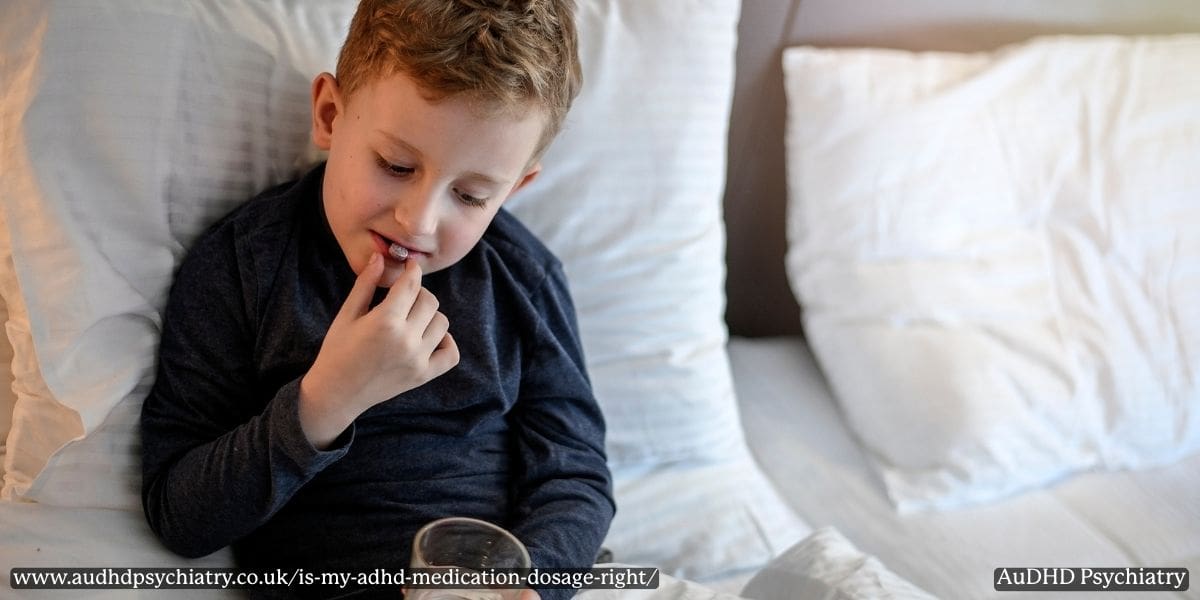
Special Considerations for Children
Children’s responses to ADHD medication can differ significantly from those of adults. It’s crucial to monitor your child’s symptoms closely, noting any behavioural changes, mood fluctuations, or signs of poor sleep. Regular check-ins with your child’s doctor can help evaluate how well the medication is managing symptoms without causing adverse effects.
Addressing Weight Loss Concerns
Weight loss is a common side effect in children taking stimulant medications. If you notice a significant decrease in your child’s weight or appetite, consult with your healthcare provider. They may recommend dietary adjustments or consider alternative medications with fewer appetite-suppressing effects.
Adjusting the Starting Dose
For children who have difficulty swallowing pills, chewable tablets can be a convenient alternative. Discuss with your child’s doctor the various medication forms available to ensure adherence and comfort.
Using a low starting dose followed by incremental increases allows for careful monitoring of your child’s response to the medication. This approach helps in finding the optimal dose that manages symptoms effectively while minimizing side effects.
Do Side Effects Always Mean the Dose Is Wrong?
Experiencing side effects doesn’t necessarily indicate that the dosage is incorrect. Some common side effects, such as decreased appetite or mild insomnia, may diminish over time as the body adjusts to the medication.
Before altering the dose, consider whether changing the timing of administration or switching to a different formulation could alleviate bothersome side effects. For instance, taking medication earlier in the day may reduce sleep disturbances.
Be vigilant for serious side effects, including allergic reactions, significant mood changes, or cardiovascular symptoms. If such effects occur, contact your healthcare provider immediately to reassess the treatment plan.
Maintaining clear and honest communication with your healthcare provider is essential. Discuss any side effects experienced to determine whether they are manageable or if adjustments to the medication regimen are necessary.
Should You Consider a Different Medication Instead?
If your current medication isn’t providing consistent symptom relief or is causing unmanageable or intolerable side effects, it may be time to explore different ADHD medications. Both stimulant drugs and non-stimulant medications are available, each with unique profiles.
Considering Non-Stimulant Options
Non-stimulant medications can be an alternative for individuals who experience adverse effects with stimulants or have a history of substance use disorders. These medications may offer a favourable side effect profile and lower abuse potential.
Making Informed Decisions
Be sure to disclose any additional prescriptions, over-the-counter drugs, or supplements to your clinician. Certain drug interactions can affect the ADHD medication effectiveness or increase the risk of side effects.
Choosing the right medication involves considering various factors, including symptom severity, lifestyle, and coexisting conditions. Collaborate with your healthcare provider to find a treatment plan customised to meet your personal needs and goals.
ADHD Medication and Coexisting Conditions
Sometimes, the challenge isn’t just finding the right ADHD medication dosage. It’s also identifying other health conditions that may affect the medication’s effectiveness. Coexisting conditions could be part of the picture if symptoms persist or side effects escalate despite careful ADHD medication titration.
For example, individuals with bipolar disorder may exhibit symptoms that overlap with ADHD but require very different treatment plans. Treating only ADHD in these cases may worsen mood instability. Similarly, if a heart condition is present, stimulant medications may not be the best option.
Liver function is another consideration. Since ADHD medications are metabolised through the liver, any liver problems could alter how the medication is absorbed or processed. Your healthcare professional may advise blood tests to monitor liver health, especially if you’re on long-term medication.
If any of these conditions are present, your provider might suggest alternative medications or a modified treatment plan that accounts for your overall health. Make sure to share all relevant health conditions with your clinician to avoid complications and ensure the safest possible care.
Final Thoughts: Is My ADHD Medication Dosage Right?
When it comes to ADHD medication, there’s no one-size-fits-all solution. What works well for someone else might not be the best medication for you. The goal is to find the dosage and formulation that controls your symptoms while supporting a balanced, productive life, not just masking behaviours or managing focus for a short period.
If you’re curious whether your current dose is working, don’t leave it to guesswork. Speak to a healthcare professional who understands the nuances of ADHD treatment options and how they interact with your lifestyle changes, routines, and other health concerns.
Finding the correct dose isn’t just about increasing or decreasing milligrams. It’s about ongoing support, routine check-ins, and adjusting the treatment plan. Whether you’re dealing with bothersome side effects, inconsistent symptom control, or a recent change in routine, regular reviews are vital.
Adjustments under professional guidance are important to help you find a dosage that helps you feel better, function better, and move closer to long-term stability. For more support navigating medication decisions or if you or a loved one needs an ADHD assessment, book a call with our team for an accurate diagnosis and individualised support.

